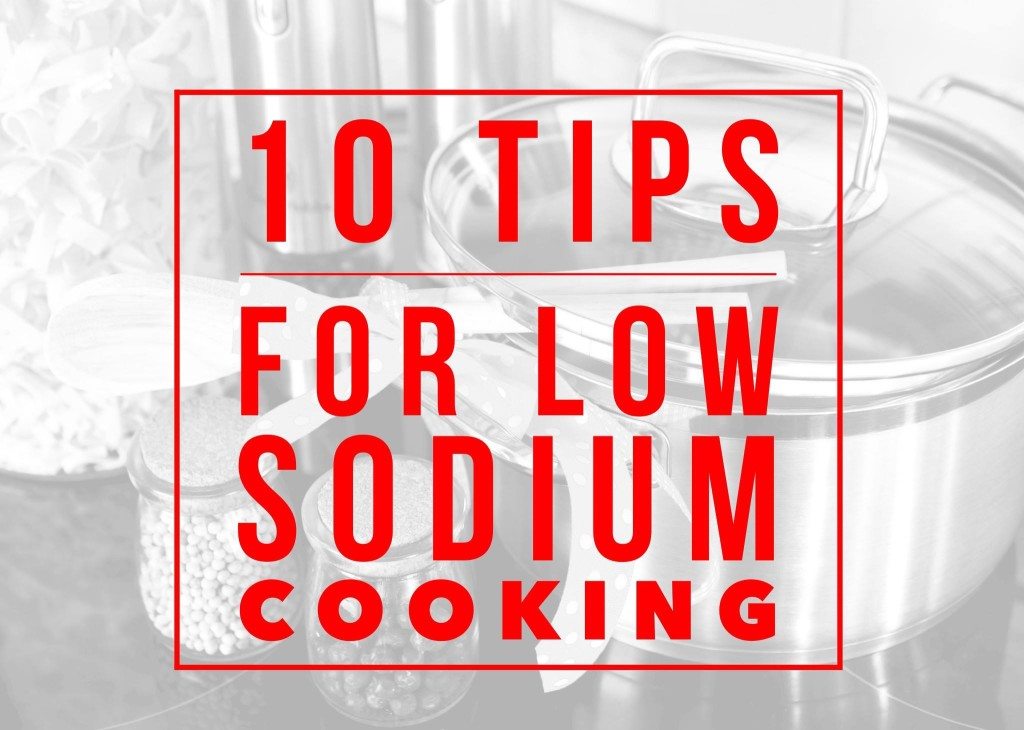When I was first told to begin the Low Sodium regimen, I was a bit overwhelmed. What were the rules? What could I eat? How could I prepare the food? I had some experience cooking, but really needed to get up to speed on some real life skills and understanding to empower myself to adopt this lifestyle for the long haul. I have included many of these #Salthacks here in this list of 10 Tips for Low Sodium Cooking:
- Utilize the following healthier cooking methods: baking, broiling, grilling, roasting, steaming, poaching, stir-frying, and yes, even microwaving.
- Always use non-stick pans or silicone baking sheets to avoid buttering or excessively oiling your pans. If you do use oil, heat the pan first to require less oil in coating the pan. Use olive oil, canola oil, or non-stick cooking spray when possible.
- Choose fish and leaner cuts of meat, like: Tenderloin, Top Round, Sirloin Tip, Extra Lean Ground Beef or Turkey, and Skinless Poultry. You should always trim any excess fat from meat or poultry before preparing.
- After meat is cooked collect and save the drippings. Placing them in the refrigerator will cause excess fats to harden on top. Remove the excess fat and use the remaining drippings to make your own gravy, broth, or marinade for next meal.
- The same technique should be used when making soups or stews; it should be refrigerated to allow the excess fat to congeal on top so it may be skimmed off.
- Baste meats with healthier liquids, like: lemon juice, low sodium tomato juice, low sodium broth, vinegar, and wine (you should avoid many store bought “cooking wines” as they are high in sodium).
- Expand your spice rack and pantry when considering seasonings. There is a whole world of spice outside of butter, margarine, salt, and parsley. Check the labels though, as many “spice blends” will have hidden sodium in high amounts.
- Avoid or find healthy substitutes for many bottled sauces and condiments as many store brands are extremely high in sodium. This includes: bouillon cubes, seasoned salts (garlic salt), seasoned peppers (lemon pepper), soy sauce, marinades, chili sauce, cocktail sauce, ketchup, barbecue sauce, steak sauce, hot sauces, and many more.
- When selecting vegetables and produce; if you can’t get fresh, select frozen or canned that have no added salt. Many items that are frozen, are done so in a salt water brine to help preserve them. Especially frozen meats.
- Most pre-packaged or pre-prepared meals are very high in sodium. Try to avoid if possible or find low sodium options.

